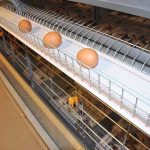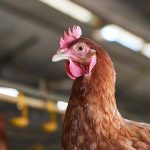Breeding technology and management of laying hens
First: ensure the sanitation, neatness, moisturization, anti-corrosion, firmness, safety, etc. of the egg laying chicken cages for sale equipment, the equipment and raw materials used in the working method, the specifications and common problems; Two: daily inspection and maintenance and the location, method and specification of inspection; third: regular inspection and review of the specific content and methods of the actual operation staff to maintain the equipment level.
Laying hens are the ‘money printing machines’ of chicken farms, so it is very important to do a good job in daily breeding management. As we all know, not all laying hens can produce high output. Only by raising and managing them well can we ensure the benefits of egg laying chicken cages for sale and maintain a well sustainable development. To this end, we will introduce the key management methods of egg laying chicken cages for sale for the breeding and management of laying hens.

Preparation before laying hens
Reasonable layout of the chicken house
The structure of the house is economical and practical. Its orientation conforms to the local natural geographical conditions, with good lighting, easy ventilation, and easy operation. It is conducive to heatstroke prevention and cooling in summer, and is conducive to thermal insulation and cold prevention in autumn, winter and early spring. The layout of the house is reasonable so that the production area and the non-production area are separated; the non-production area and the water source are in the upwind direction of the chicken farm; the dirty road and the clean road are separated and do not cross; the manure farm is located in the downwind direction of the chicken farm; The houses are separated, and the brooding house is located upwind of the chicken farm. The site should be selected away from residential areas, with convenient transportation and away from roads. The terrain is dry and the sun is full, so try not to block the light in early spring, not block the wind in summer, and not accumulate water after rain. The area is large and there is room for development. The water resources are abundant and pollution-free, easy to use, and the electricity is sufficient and guaranteed. Understand the local epidemic situation of poultry diseases, and try to avoid epidemic areas or areas where epidemics have occurred. Avoid urban polluted areas and take appropriate environmental protection measures to minimize environmental pollution.



